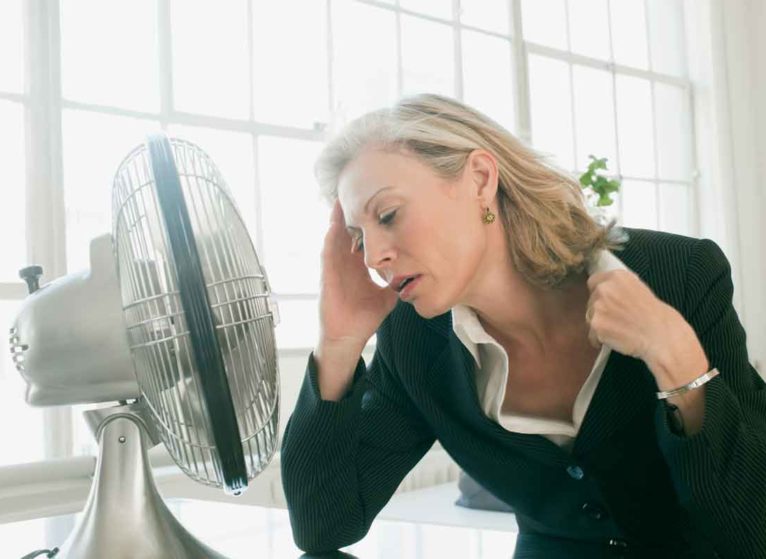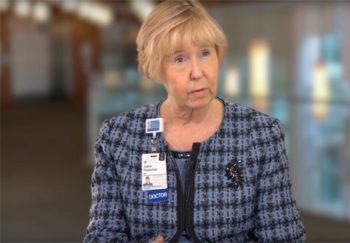There’s no good time for the signs of perimenopause to appear. But for many women, perimenopause added to the mix of midlife is like a perfect storm.
You’re juggling hot flashes and high-stress responsibilities. You’re managing your teen’s mood swings on top of your own emotional highs and lows. Dealing with aging parents and the very clear signs that you’re getting older, too. Not to mention the sleepless nights, brain fog, irregular periods, and low libido.
Unfortunately, this isn't like puberty or pregnancy. There’s not a lot of support for women during this stage of significant hormonal change. In fact, many women are hesitant to admit they’re experiencing the early signs of menopause at all.
You Don’t Have to Suffer in Silence
“Around 42% of women have never talked about menopause with a doctor,” says OBGYN JoAnn Pinkerton, MD. “There is a stigma associated with this phase in a woman’s life. Women don’t want to admit that they’re showing symptoms of perimenopause because it means they’re aging. They fear others may see them as less capable, particularly in the workplace.”
The result: many women suffer in silence. But they don’t have to. There are treatments to help women cope with the many symptoms of perimenopause.
Pinkerton is the director of UVA Midlife Health and executive director emeritus of the North American Menopause Society. We asked her to give us a primer on perimenopause. Below, she provides tips on how to manage some of most common (and most annoying) side effects.
Perimenopause FAQs
What Is Perimenopause?
Perimenopause is sometimes called premenopause, the menopause transition, or early menopause. It is the time when your body naturally shifts into menopause. “During this time, a woman’s ovaries produce fewer hormones and release fewer eggs,” says Pinkerton. Periods are often irregular. Eventually, they stop altogether. When a woman has gone 12 months without a menstrual cycle with no other cause, she’s reached menopause.
What Is the Average Age for Women to Enter Perimenopause?
The age you start perimenopause is different for everyone. The average age of menopause is around 51 or 52, according to Pinkerton. “Most women will begin having early symptoms of perimenopause in their late forties. Some will start earlier — and some won’t have any symptoms at all,” she says.
How Long Does Perimenopause Last?
Perimenopause symptoms last about 4 years. But they can last longer. “When you’ve reached the point when you’re missing 3 periods in a row, then you know perimenopause is coming to an end. You’re getting close to menopause,” says Pinkerton.
Can You Predict When Perimenopause Will Begin?
Your family history may give you a clue about when perimenopause will begin. “Did your mother or sister go through menopause early or late? You may go through it around the same time,” says Pinkerton.
Can You Get Pregnant During Perimenopause?
Yes. Your body is making fewer eggs at this stage. But until you reach menopause, you can still get pregnant. That means contraception is still important. “Women over 40 have the second-highest rate of unintended pregnancies,” says Pinkerton.
Signs of Perimenopause: Symptom Survival Tips
Not all women have perimenopause symptoms. Women who do can have a variety of symptoms that range in severity and frequency. This makes perimenopause hard to manage even for some care providers. “Perimenopause is one of the more challenging phases for women. It’s unpredictable,” says Pinkerton. “Hormones are fluctuating, so symptoms can change.”
Here are some of the most common signs of menopause and the treatments to help keep them in check.
Irregular Periods
A missed period is typically the first sign of perimenopause. Bleeding may be heavier than normal some months. Your period may be more painful or you may have a surprise cycle.
Abnormal bleeding is often best controlled with low-dose contraceptives. Available as a pill, patch, or ring, these contraceptives may have a combination of the hormones estrogen and progestin. They stop ovulation to regulate cycles.
There are also progestin-only options. They are available in a pill or with an intrauterine device (IUD). There are also non-hormone medications available. Women who cannot take estrogen (women with a history of breast cancer, for example) can often use these safely.
Hot Flashes
Hot flashes are the most common symptom of menopause. The sudden burst of heat can leave women flushed and drenched in sweat. For around 25% of women, these episodes happen often and are annoying, particularly if they’re having night sweats that interrupt sleep.
Hormone therapy (HT) is the gold standard for treating hot flashes and other signs of perimenopause like vaginal dryness, according to Pinkerton. It replaces the hormones a woman’s body is making less of during menopause: estrogen and progesterone. Unfortunately, there are many misconceptions about HT that keep women from trying it.
The Facts on Hormone Therapy
According to Pinkerton, these are are the key things you need to know to decide if HT is right for you:
- HT is safest for healthy women who start it under the age of 60 or women within 10 years of reaching menopause.
- Some women who take HT have a greater risk of blood clots and stroke. Hormones applied to the skin via patches, sprays, and gels decrease this risk because they bypass the liver.
- HT can increase the risk of breast cancer in women who use higher doses. The risk is greater for women with a uterus who take a combination of estrogen and progestogen for more than 5 consecutive years. Estrogen alone has a lower risk of breast cancer.
- HT can reduce bone loss, improve sleep, and promote brain health and heart health if started before age 60.
- Bioidentical hormones are similar to what your body made before menopause. Most start as plant-based hormones. Doctors can tailor them to maximize benefits and lower risks. Women should choose bioidenticals approved by the U.S. Food and Drug Administration instead of custom compounds, which are not monitored by the FDA.
- National medical organizations do not recommend hormonal pellets placed under the skin. This is because of the high concentration of hormones.
Low-dose antidepressants and a drug called gabapentin also can help relieve hot flashes. But they don’t work as well as HT. New, more effective medications to treat hot flashes are also being developed.
One drug is now up for FDA approval. It targets the neurons in the brain that trigger hot flashes. Plus, UVA Health is part of a drug study for another similar medication. This drug aims to treat hot flashes as well as other menopausal symptoms, including mood swings and insomnia. (Find out if you are a good candidate for this study.)
Low Libido
If the number of commercials on treating erectile dysfunction is any sign, men’s sexual health is a big deal. But a woman’s sex drive has been a taboo topic, even among care providers. “We’ve approached women’s libido with a ‘don’t ask, don’t tell’ mentality, and it’s time to change that,” says Pinkerton.
Hormonal fluctuations play a big role in a woman’s sex drive. But that’s not the only thing that may put a damper on her desire. “A woman’s libido is complex,” says Pinkerton. “There are so many factors that affect her sex drive — sleep, stress, caregiving. We try to help women focus on themselves, their priorities, and their health. Then we address libido.”
There are medications approved for premenopausal women if lifestyle modifications are not effective:
- An injection taken on demand as needed
- An oral medication taken daily
Mood Swings
If you find yourself snapping at your kids or crying at commercials, you can blame it on the hormones. We now know that hormonal changes can impact our moods and mental health, according to Pinkerton.
For some women, irritability, anxiety, sadness, and emotional instability worsen as they progress through perimenopause. “Women who had depression as a teen, postpartum depression, or experienced trauma are at greater risk for depression and mood issues during perimenopause,” says Pinkerton.
To help you get a handle on mood swings, doctors first need to determine the cause. “Hormone therapy could relieve symptoms. But if depression or something else other than hormone fluctuations is the cause, you may need therapy or mood medications,” says Pinkerton. Combination therapy (HT and antidepressants with psychotherapy) may be the best option for some women.
Bothered by Signs of Perimenopause?
UVA Midlife Health specialists can help you manage hormonal changes.
Signs of Perimenopause: When to See a Doctor
You may be able to manage many signs of perimenopause with lifestyle changes. Exercise, a healthy diet, stress reduction or mindfulness, cutting back on alcohol, and getting enough sleep are going to help you:
- Battle belly fat
- Fight fatigue
- Manage mood swings
- Lift low libido
If symptoms ever get to a point that they’re impacting your daily life, it’s time to ask for support. “Whenever you are having symptoms that are bothersome to you, check in with your provider. Talk to them about perimenopause,” says Pinkerton. “If they aren’t interested or don’t have time to address your concerns, it may be time to see a specialist.”


